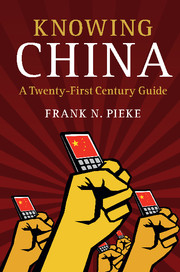Book contents
- Frontmatter
- Dedication
- Contents
- Preface
- Main Events in China, 1976–2015
- 1 Introduction: Knowing China
- 2 Why the Communist Party Will Not Fall from Power
- 3 China's Economy Will Continue to Grow, but Not Forever
- 4 Freedom without Universal Human Rights
- 5 From Empire to Nation, or Why Taiwan, Tibet and Xinjiang Will Not Be Given Independence
- 6 Not Just a Chinese Century
- 7 Conclusion: The Communist Party and China's Future
- Further Reading
- References
- Index
3 - China's Economy Will Continue to Grow, but Not Forever
Published online by Cambridge University Press: 05 July 2016
- Frontmatter
- Dedication
- Contents
- Preface
- Main Events in China, 1976–2015
- 1 Introduction: Knowing China
- 2 Why the Communist Party Will Not Fall from Power
- 3 China's Economy Will Continue to Grow, but Not Forever
- 4 Freedom without Universal Human Rights
- 5 From Empire to Nation, or Why Taiwan, Tibet and Xinjiang Will Not Be Given Independence
- 6 Not Just a Chinese Century
- 7 Conclusion: The Communist Party and China's Future
- Further Reading
- References
- Index
Summary
The Politics of Growth
China's economic growth since the onset of the reforms in 1978 has been unprecedented. Beyond this minimal consensus, economists inside and outside China disagree on just about any aspect of China's developmental trajectory. Has economic development principally been driven by the inexorable rise of the private sector, the marketization of the state sector, the opening to the world market, or more generally by sagacious policy making of the CCP? Is reform a linear process that started modestly and gradually deepened and radicalized, or has reform at certain junctures taken abrupt changes of direction, perhaps even rolling back earlier, more radical policies?
Debates on China among economists are generally wrapped in assumptions on how an economy ought to work, leading to conclusions about what is wrong or missing and what still needs to be changed or put in place before the economy can be proclaimed fully reformed. Doing so might come at the risk of losing sight of how the economy actually functions. Each economy, and most definitely the Chinese one, is a unique configuration that only imperfectly fits the moulds of economics. In this chapter I will try to avoid what the economist Ronald Coase called the ‘blackboard economics’ of models and assumptions and stay as close as possible to the reality on the ground. I will draw on the research of economists, sociologists and political scientists on the politics of the complexities and contradictions that shape the economy. I will then gauge the seriousness of the main challenges and opportunities for continued development that depart from Chinese realities instead of wishing to prescribe a particular cure.
We will have to start by questioning several common assumptions. The first such assumption is that Chinese modernization and development started with the announcement of reform at the Third Plenum of the Eleventh Party Congress in 1978. The Third Plenum's most important contribution was that it created and publicly signalled a consensus among the Party leadership that old Maoist ideas no longer worked, but had led to disaster after the first few ‘golden years’ immediately after the communist victory in 1949.
- Type
- Chapter
- Information
- Knowing ChinaA Twenty-First Century Guide, pp. 50 - 83Publisher: Cambridge University PressPrint publication year: 2016

